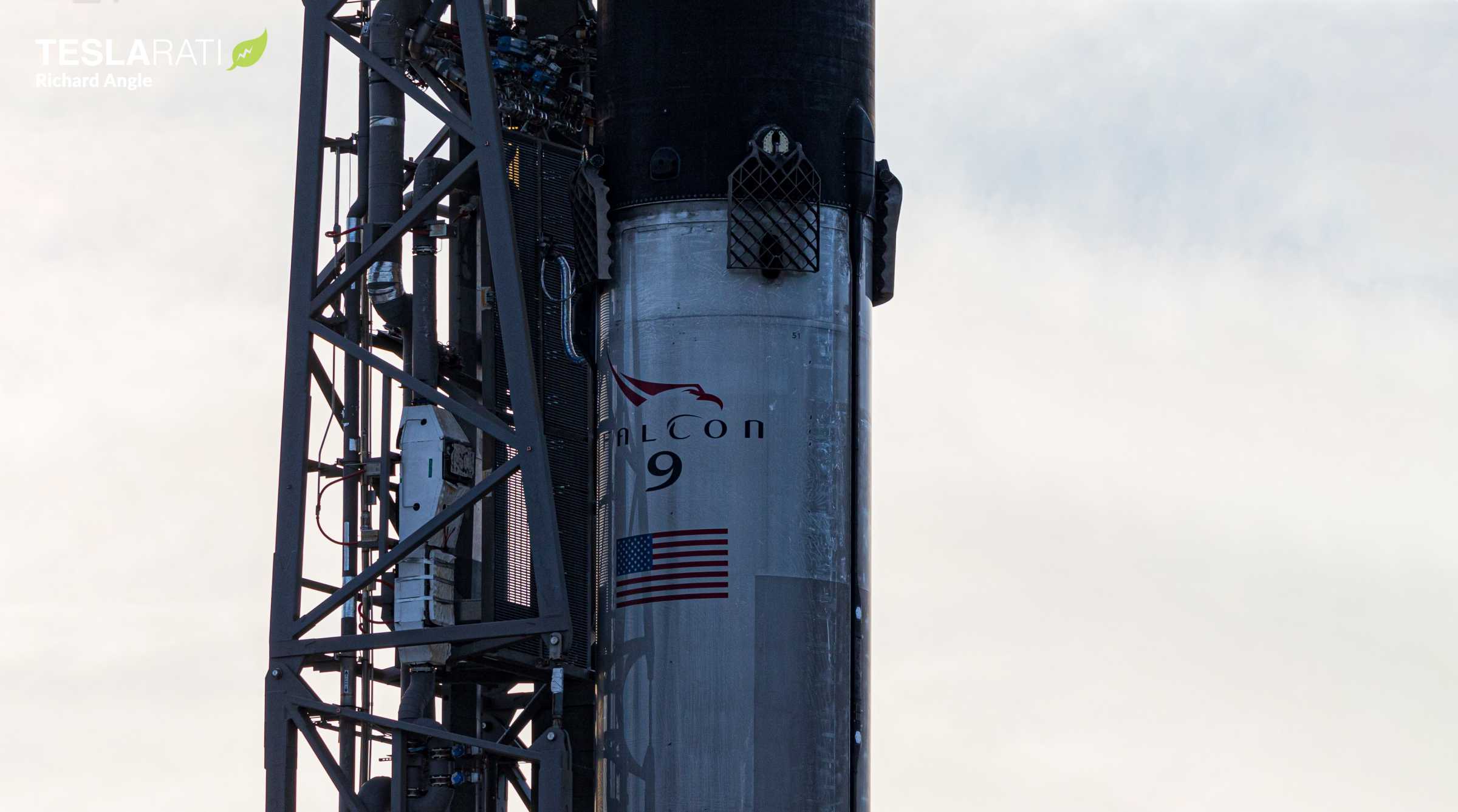
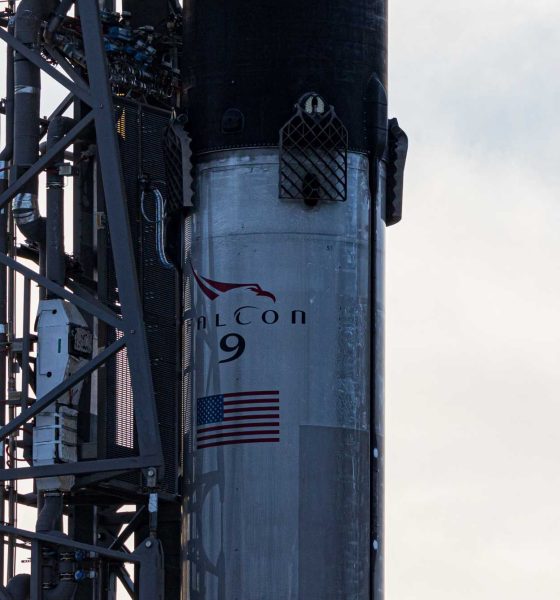
News
SpaceX Falcon 9 rocket rolls to launch pad earlier than usual for next Starlink mission
A SpaceX Falcon 9 rocket has rolled to the launch pad a full week before the company’s next 60-satellite Starlink launch is scheduled, much earlier than usual compared to all recent Starlink missions.
Thrice-flown Falcon 9 booster B1051 will be supporting the internal SpaceX launch, serving as a partial return-to-flight mission after a Falcon 9 rocket suffered its first in-flight engine failure since 2012 less than a month ago. Recently discussed on Teslarati, prime customer NASA – perhaps just a month away from its first astronaut launch on a SpaceX Crew Dragon and Falcon 9 – has to outwardly worry about the impact of Falcon 9’s March 18th engine failure. Most recently, administrator Jim Bridenstine signaled that SpaceX had already effectively determined the failure mode enough for him to state that it’s “not going to impact our commercial crew launch.”
Likely implying that the engine failure was closely related to the fact that Falcon 9 booster B1048 was on its fifth launch, a first for SpaceX, a successful Starlink launch next week would likely alleviate most remaining customer concerns. Delayed a week from April 16th to 23rd, the rocket’s move to the launch pad indicates that SpaceX may be exerting significantly more caution on this particular Starlink launch, a sign that the company is unsurprisingly prioritizing a fully-successful mission over speed.
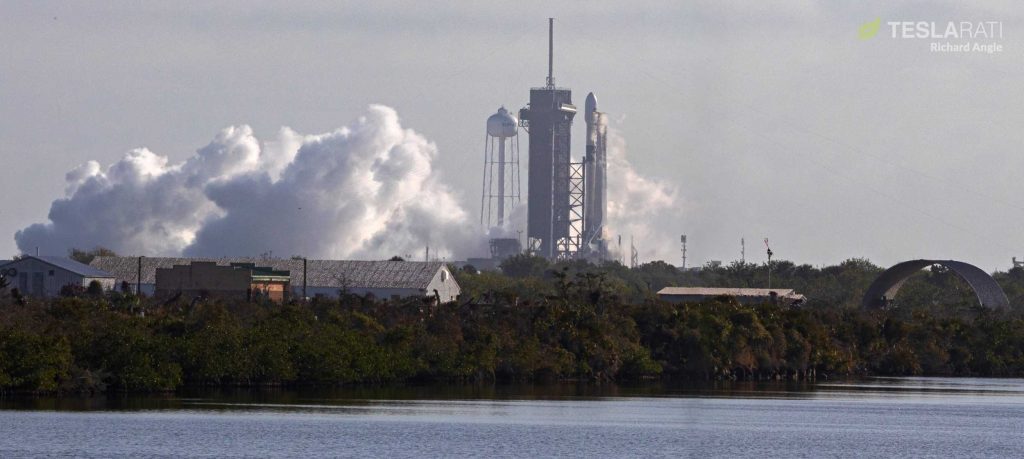
Excluding delays, recent SpaceX Starlink launches have seen their Falcon 9 rockets roll out to the launch pad and perform their preflight static fire tests just a few days (or less) before liftoff. To achieve that, SpaceX – for the first time since September 2016 – has begun installing payloads (its own Starlink satellites) on top of Falcon 9 before their static fires. Known as Starlink V1 L6 or Starlink-6 for short, that also remains true for this particular mission – SpaceX’s 6th Starlink launch since November 2019 and 7th launch overall.
Easily visible in Spaceflight Now’s live views of Falcon 9’s roll to the launch pad, the rocket already has a payload fairing – presumably full of 60 Starlink satellites – installed atop its second stage. The fact that SpaceX has rolled the fully-integrated Starlink-6 rocket to the launch pad a full week before its planned liftoff is thus at least a little curious.
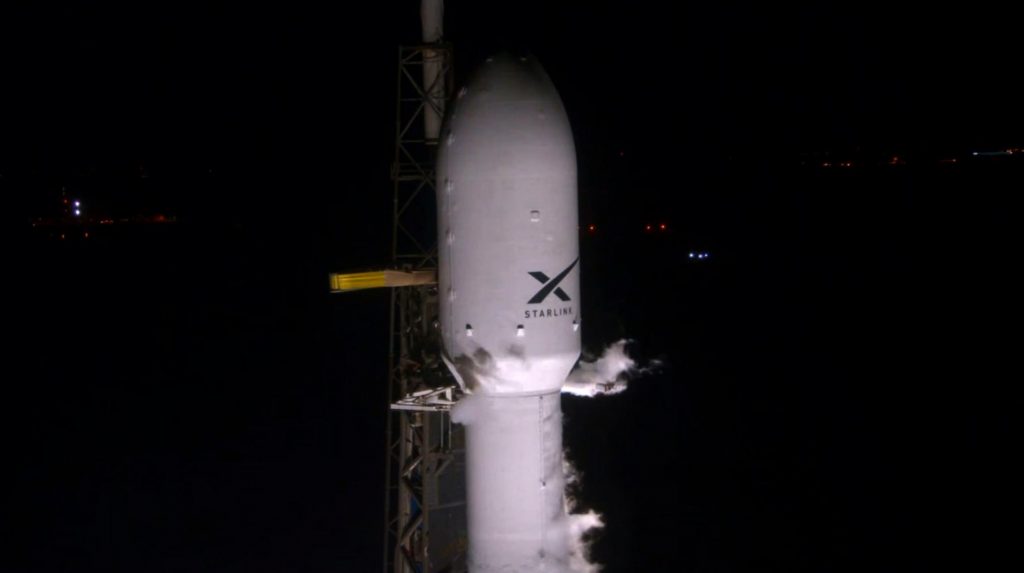
The presence of a payload fairing effectively rules out an issue with Starlink satellites as the cause of the delay, while it also makes it much less likely – but not impossible – that any bugs were found in Falcon 9’s first or second stages. Were any such issues discovered, it’s hard to imagine that SpaceX would have chosen to roll the fully-integrated rocket to the launch pad, as any hardware issues would almost certainly require a return to the hangar and some level of disassembly.
As such, the reason for the rocket’s relatively early move to the launch pad is a bit of a mystery. Most likely, as briefly noted, SpaceX is simply taking a more cautious approach to this launch as a result of challenges faced in February and March. The use of Pad 39A – normally dedicated to Falcon Heavy and Crew Dragon launches – also raises the stakes a bit, as a vehicle failure on or around the launch pad would inherently result in major delays to NASA’s critical Commercial Crew Program astronaut launches.
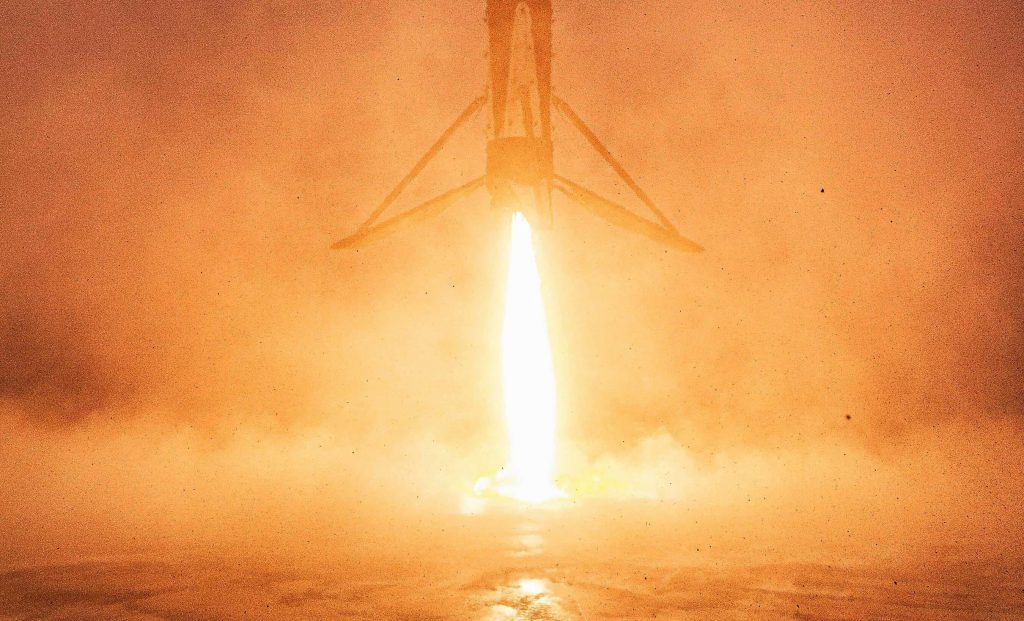
Either way, SpaceX’s Starlink-6 mission is set to be uniquely high-profile. According to launch photographer Ben Cooper, Falcon 9 is scheduled to launch no earlier than 3:16 pm EDT (19:16 UTC) on Thursday, April 23rd. Stay tuned for updates as the rocket approaches its static fire test.

Investor's Corner
Tesla gets price target bump, citing growing lead in self-driving

Tesla (NASDAQ: TSLA) stock received a price target update from Pierre Ferragu of Wall Street firm New Street Research, citing the company’s growing lead in self-driving and autonomy.
On Tuesday, Ferragu bumped his price target from $520 to $600, stating that the consensus from the Consumer Electronics Show in Las Vegas was that Tesla’s lead in autonomy has been sustained, is growing, and sits at a multiple-year lead over its competitors.
CES 2026 validates Tesla’s FSD strategy, but there’s a big lag for rivals: analyst
“The signal from Vegas is loud and clear,” the analyst writes. “The industry isn’t catching up to Tesla; it is actively validating Tesla’s strategy…just with a 12-year lag.”
The note shows that the company’s prowess in vehicle autonomy is being solidified by lagging competitors that claim to have the best method. The only problem is that Tesla’s Vision-based approach, which it adopted back in 2022 with the Model 3 and Model Y initially, has been proven to be more effective than competitors’ approach, which utilizes other technology, such as LiDAR and sensors.
Currently, Tesla shares are sitting at around $433, as the company’s stock price closed at $432.96 on Tuesday afternoon.
Ferragu’s consensus on Tesla shares echoes that of other Wall Street analysts who are bullish on the company’s stock and position within the AI, autonomy, and robotics sector.
Dan Ives of Wedbush wrote in a note in mid-December that he anticipates Tesla having a massive 2026, and could reach a $3 trillion valuation this year, especially with the “AI chapter” taking hold of the narrative at the company.
Ives also said that the big step in the right direction for Tesla will be initiating production of the Cybercab, as well as expanding on the Robotaxi program through the next 12 months:
“…as full-scale volume production begins with the autonomous and robotics roadmap…The company has started to test the all-important Cybercab in Austin over the past few weeks, which is an incremental step towards launching in 2026 with important volume production of Cybercabs starting in April/May, which remains the golden goose in unlocking TSLA’s AI valuation.”
Tesla analyst breaks down delivery report: ‘A step in the right direction’
Tesla has transitioned from an automaker to a full-fledged AI company, and its Robotaxi and Cybercab programs, fueled by the Full Self-Driving suite, are leading the charge moving forward. In 2026, there are major goals the company has outlined. The first is removing Safety Drivers from vehicles in Austin, Texas, one of the areas where it operates a ride-hailing service within the U.S.
Ultimately, Tesla will aim to launch a Level 5 autonomy suite to the public in the coming years.
Elon Musk
Elon Musk’s Biggest Revelations on AI, Robots, and the Future of Work from the Moonshots Podcast

Elon Musk’s appearance on the Moonshots with Peter Diamandis podcast was packed with bold predictions, candid admissions, and surprising tech insights. The nearly three-hour conversation covered everything from artificial intelligence to humanoid robots, geopolitics, and the future of work. Here are the top 10 most intriguing takeaways:
-
Aggressive AGI Timeline Predictions
Musk offered a detailed view on when artificial general intelligence (AGI) could emerge, suggesting it may arrive sooner than many expect, emphasizing both transformative potential and risks.
-
U.S. vs. China in the AI Race
He discussed the strategic competition between the United States and China over AI development, noting that geopolitical dynamics will shape how and who leads in the next decades.
-
Future of Job Markets
Musk touched on how AI and automation could reshape employment, predicting massive boosts in productivity alongside potential disruptions in traditional work structures.
-
Clean Energy Transition
A recurring theme was the role of clean energy in future economies, with Musk reiterating the importance of scaling sustainable power generation and storage.
-
Humanoid Robots Are Coming
On the podcast, Musk elaborated on Tesla’s work on humanoid robots, hinting at timelines and applications that go beyond factories to general-purpose assistance.
-
Tesla Roadster “Last Human-Driven Car”
Outside the core discussion topics, Musk teased features of the upcoming Tesla Roadster — calling it “the best of the last of the human-driven cars” and suggesting safety won’t be its main selling point.
-
The Role of AI in Clean Energy and Robotics
Linking AI to both energy optimization and robotics, Musk explained how smarter systems could accelerate decarbonization and task automation across industries.
-
U.S. Innovation Leadership
Musk argued that maintaining American leadership in key tech sectors like AI, space, and robotics should be a national priority, with thoughtful policy and investment.
-
Job Creation vs. Job Elimination
While acknowledging automation’s disruptive effects, he also outlined scenarios where new industries and opportunities could emerge, particularly in AI, space, and advanced manufacturing.
-
Long-Term Vision for Humanity
Throughout the conversation, Musk revisited his long-term philosophical views — including a belief in humanity’s responsibility to become a multi-planetary and technologically empowered species.
Whether you agree with Musk’s optimism or not, the podcast offers a window into the thinking of one of the most influential figures in tech today, in and why his visions continue to spark debate and inspiration.
Elon Musk
Elon Musk just said some crazy stuff about the Tesla Roadster

Elon Musk appeared on the Moonshots podcast with Peter Diamandis today to discuss AGI, U.S. vs. China, Tesla, and some other interesting topics, but there was some discussion about the upcoming unveiling of the Roadster, the company’s electric supercar that will arrive several years after it was initially slated for release.
Musk made some pretty amazing claims about the Roadster; we already know it is supposed to be lightning-fast and could even hover, if Tesla gets everything to happen the way it wants to. However, the car has some pretty crazy capabilities, some of which have not even been revealed.
On the podcast, Musk said:
“This is not a…safety is not the main goal. If you buy a Ferrari, safety is not the number one goal. I say, if safety is your number one goal, do not buy the Roadster…We’ll aspire not to kill anyone in this car. It’ll be the best of the last of the human-driven cars. The best of the last.”
🚨 Elon on the Roadster unveiling, scheduled for April 1:
— TESLARATI (@Teslarati) January 6, 2026
Musk makes a good point: people who buy expensive sports cars with ridiculous top speeds and acceleration rates do not buy them to be safe. They hope they are safe in case of an emergency or crash, but safety is not at the forefront of their thoughts, because nobody buys a car thinking they’ll crash it.
The Roadster is truly going to push the limits and capabilities of passenger vehicles; there’s no doubt about that. Tesla plans to show off the new version car for the first time on April 1, and Musk has only hinted at what is possible with it.
Musk said back in November:
“Whether it’s good or bad, it will be unforgettable. My friend Peter Thiel once reflected that the future was supposed to have flying cars, but we don’t have flying cars. I think if Peter wants a flying car, he should be able to buy one…I think it has a shot at being the most memorable product unveiling ever. [It will be unveiled] hopefully before the end of the year. You know, we need to make sure that it works. This is some crazy technology in this car. Let’s just put it this way: if you took all the James Bond cars and combined them, it’s crazier than that.”
Production is set to begin between 12 and 18 months after the unveiling, which would put the car out sometime in 2027. Hopefully, Tesla is able to stay on track with the scheduling of the Roadster; many people have been waiting a long time for it.








